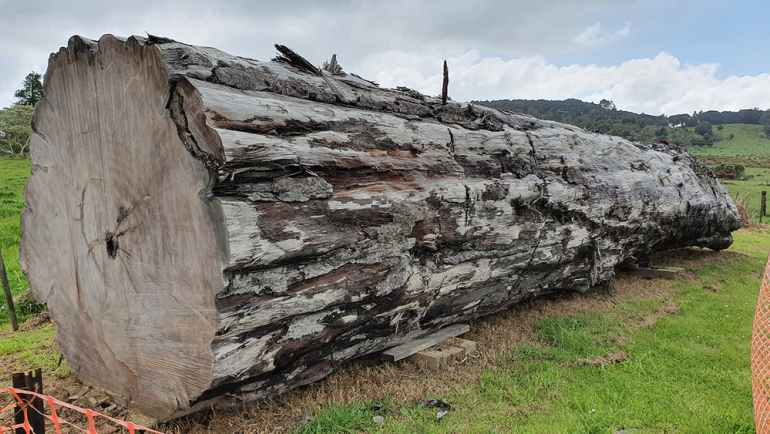According to a new study prepared by an international team of scientists that the magnetic disturbance that occurred on Earth nearly 42 thousand years ago, led to large-scale climate changes, and the widespread extinction of many organisms and plants, in addition to changes in the behavior of ancient humans.
The scientists found evidence of these horrific changes in the fossilized tree remains, and by simulating the conditions that prevailed after the Earth's magnetic poles shifted in conjunction with changes in solar activity.
Magnetic disorder
It is known that the magnetic north pole - the point indicated by the magnetic compass needle - does not have a permanent position, and it usually oscillates around the geographic north pole - the point around which the Earth revolves - due to the movement of the Earth's core.
However, for reasons that are still not clear to scientists, the movement of the magnetic pole can sometimes be more intense, so the north magnetic pole moves south and south to north without being completely reversed.
This causes a dramatic disturbance in the Earth's magnetism, such as that which occurred 42 thousand years ago, and is known as the "Laschamps Excursion", in reference to the French village where traces of this event were first found.
Although scientists have found ample evidence of this event all over the world, it is not clear to them whether or not it has impacts on climate and life on the planet.
In the new study recently published in the journal Science, scientists have gathered evidence indicating that the effects of this phenomenon on climate and life were global and far-reaching, according to a press release from the Australian University of New South Wales. .
The researchers called what happened in that period the "Adams event", after science fiction writer Douglas Adams, who identified in one of his novels the number "42", as an answer to life, the universe and everything.
The fossilized remains of Kori trees revealed what happened 42 thousand years ago (Nelson Parker - University of New South Wales)
The trees reveal what happened
To find this evidence, researchers analyzed ancient New Zealand kauri trees that have been preserved in swamps and sediments for more than 40,000 years.
Using the annual growth rings of these trees, they were able to create a detailed timeline of how the Earth's atmosphere changed during that period.
The results of the analysis revealed a rise in radiocarbon levels in the atmosphere due to the collapse of the Earth's magnetic field with the shifting of the poles, which provided a way to accurately link the geographically dispersed records.
Using the timeline that was created, the researchers in the study were able to detect a sudden and simultaneous change of tropical rain belts in the Pacific and the westerly winds of the Southern Ocean, which transformed many regions from wet to dry and arid.
These climatic changes led to the extinction of many species of plants and megafauna, including the giant kangaroos that once lived in Australia.
In the north of the globe, the "Laurentide" ice sheet grew rapidly in eastern United States and Canada, and in Europe the extinction of the Neanderthals began.
Escape to caves
The researchers also found, through computer simulations of the interactions between chemistry and climate, that the strength of the Earth's magnetic field decreased to less than 6% of what it is today.
Under these conditions, our planet lost its shield from cosmic radiation, which allowed many charged particles to reach the upper part of the atmosphere.
Meanwhile, the sun experienced many periods of inactivity, during which the solar activity was much less than usual and unstable, which led to the release of many huge solar flares that allowed more ionizing and strong rays to reach the Earth's upper atmosphere, charging particles in the air and causing In chemical changes led to the loss of the ozone layer in the atmosphere.
According to the researchers, these dramatic changes and the unprecedented high levels of ultraviolet rays prompted early humans to seek shelter in caves, which explains the apparent sudden boom of cave art across the world 42,000 years ago.

